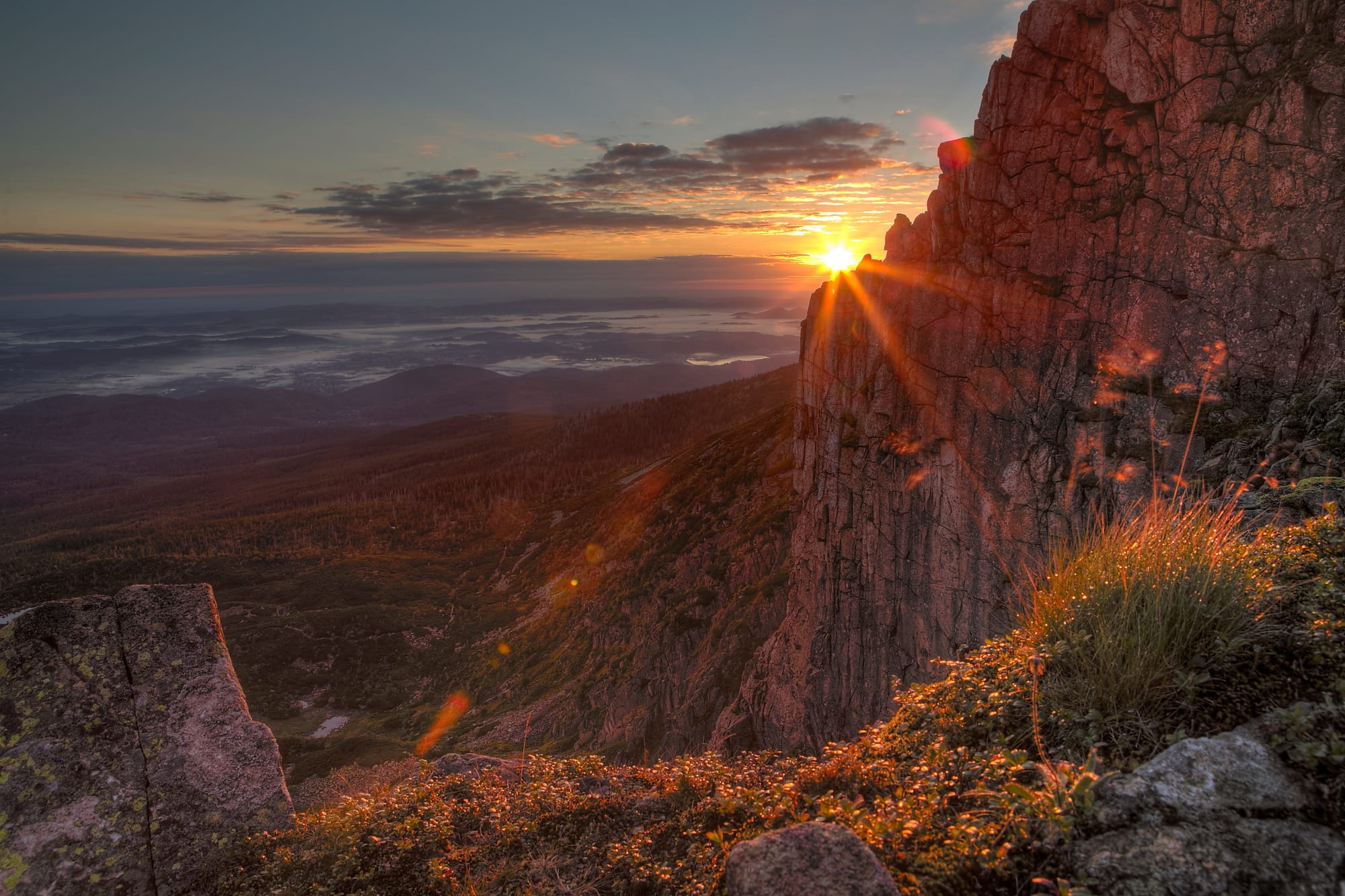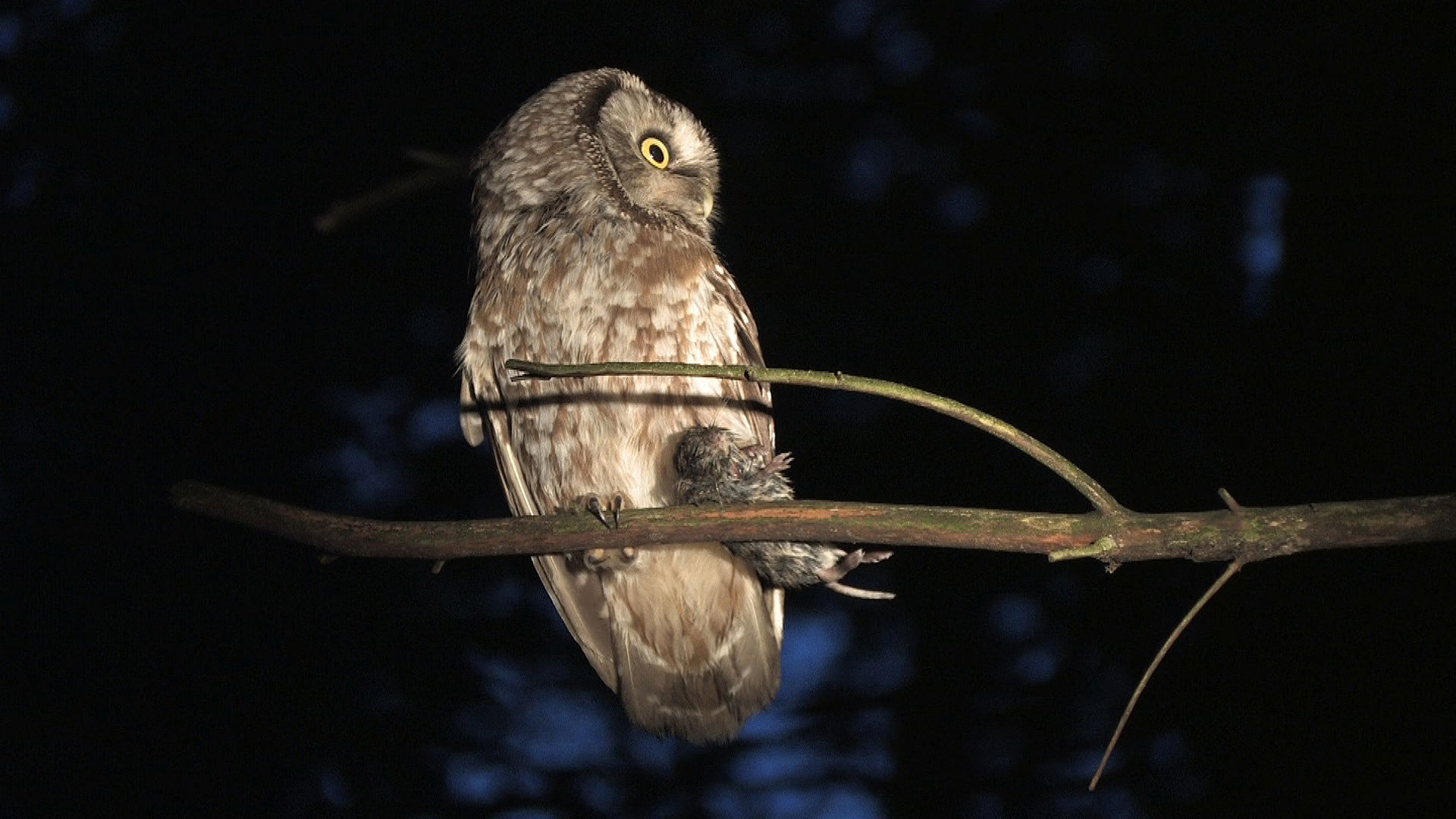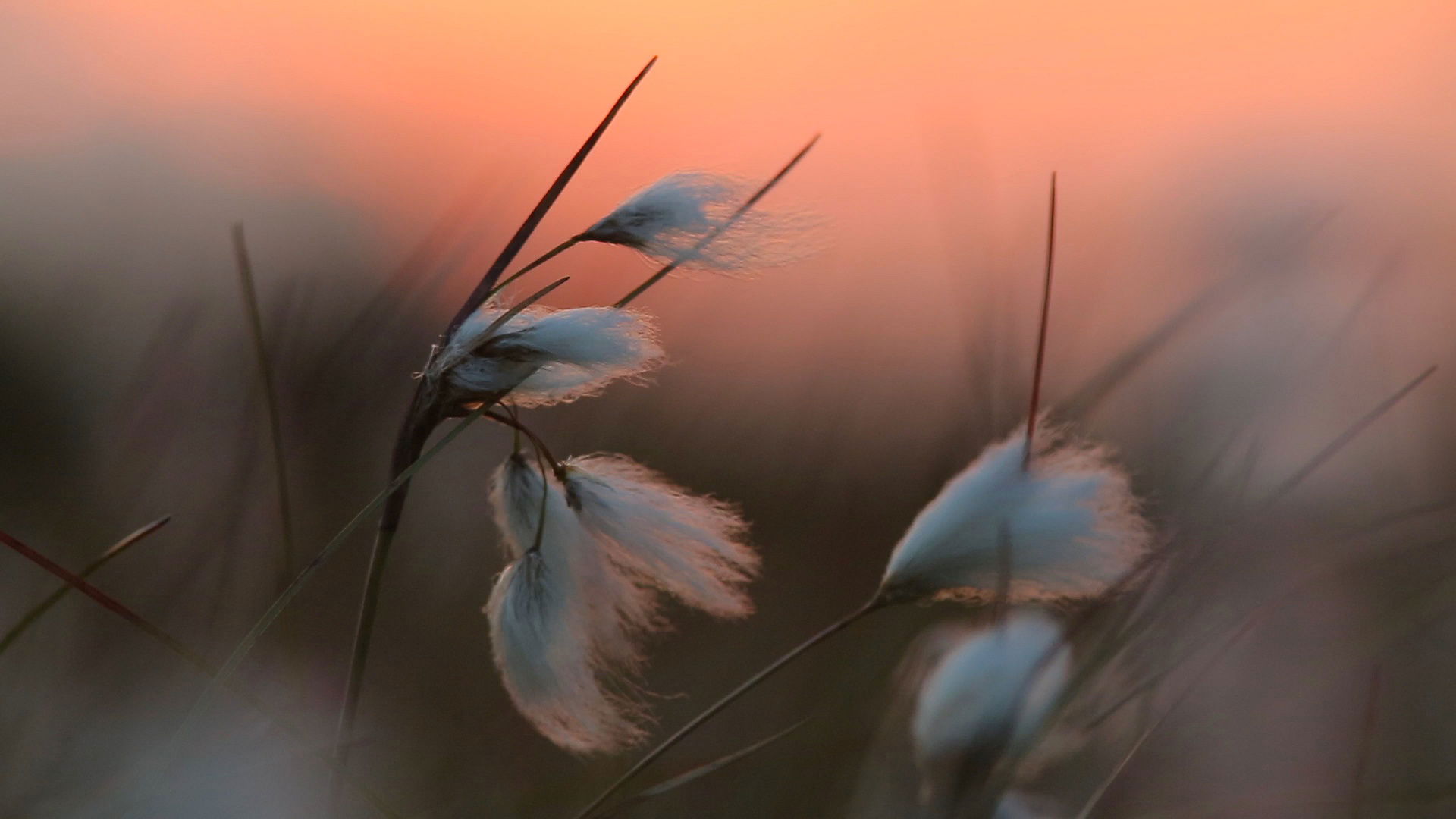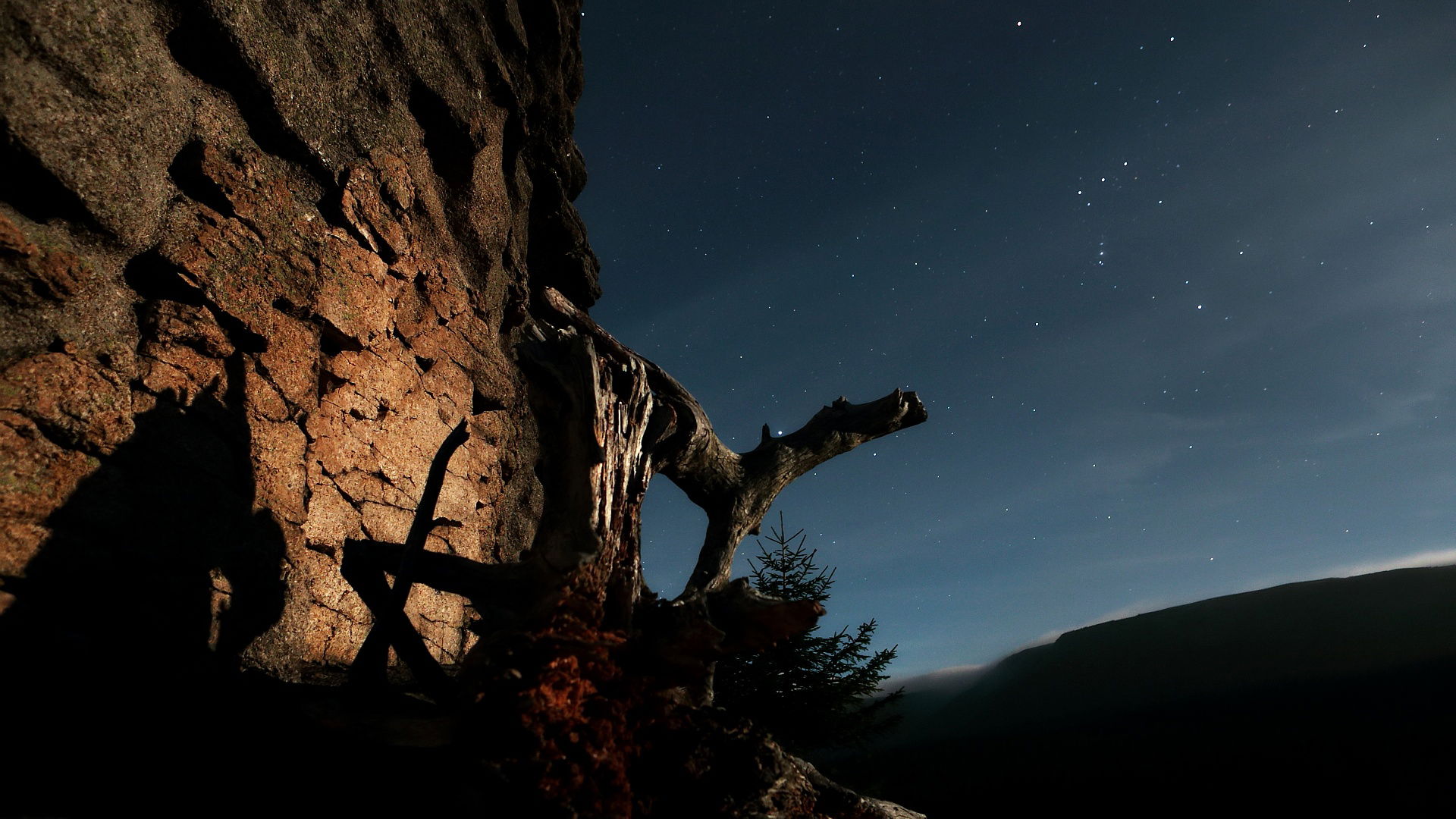KARKONOSZE-THE ETERNAL SONG OF
WIND AND FROST
A FILM BY
MAREK MARTINI
The Tale
'Karkonosze, the Song of Wind and Frost' is a unique, timeless tale of the mountains where monumental beauty and power of the elements are intertwined with the sensitivity of intricate ecosystems which have remained unaffected for thousands of years. The film pictures both the primaeval cycles of nature and the magic of the moment, unique and irrevocably gone. The mystery of nature appears as a performance to the observant and the initiated. We are invited to this world by the author who pays his very personal tribute to the Karkonosze Mountains. In the film, not one word is spoken - nature speaks for itself and the mood and emotions are accentuated by the music specially composed for this piece.
The Mountains
The Karkonosze Mountains are a remarkable mountain range situated in Central Europe on the border of Poland and the Czech Republic. They are the highest range of the Sudetes. Against the background of the surrounding landscape of this part of the continent, their natural world/environment is exceptional. In the Karkonosze, a comparatively low mountain range, we can find both flora and fauna characteristic of typical alpine regions and northern Europe. Its contemporary environment had been moulded by the ice age to a great extent. Post-glacial legacy took its toll here. The characteristic landform and the unique, often relic composition of species of flora and fauna, together with the prevailing severe weather conditions liken the Karkonosze to subarctic regions and that is why they are called ‘an arctic island in the heart of Europe’.
Making of the film
The idea of making a film about the wildlife of Karkonosze goes back to the year 2007. Initially, together with my wife, we thought of this project only in terms of educational material, and what is more limited only to birds. After the initial period of planning, thinking through the project and aquiring necessary permits, as well as purchasing equipment, we went ahead with the shooting of the film. It started at the beginning of 2009. I expected that it would take one to two years to take sufficiently good shots of a few most characteristic birds of the Karkonosze. Of course, I was wrong… Life proved it to be a greater challenge - in spite of our vast knowledge of the filmed species and the area, it took nearly seven years.
With time, I realized that we could go outside the framework of typical educational material and create a more universal and artistic picture. In my mind appeared different, more or less avant-garde concepts. The film started to evolve into an image of the natural world of the Karkonosze.
With time, I realized that we could go outside the framework of typical educational material and create a more universal and artistic picture. In my mind appeared different, more or less avant-garde concepts. The film started to evolve into an image of the natural world of the Karkonosze.
We understood that we needed to show a wider context. And so precious and sensitive ecosystems such as subalpine mires on the summit plateau or plant communities of the post-glacial cirques come to the foreground. Picturesque formations of rocky outcrops highlight the unique landscape of the Karkonosze. Seasonal changes, particularly enchanting in the mountains, sometimes even dramatic, superimpose on the whole picture. Thus, the film evolved into a more contemplative, perhaps even philosophical one. It could be said that the universal experience of passing away and the accompanying nostalgia put their mark on the nature-educational foundations. These foundations might have even completely eroded, but the film had to be finished at some point…
The process of collecting satisfying material of very diverse objects proved to be singularly time-consuming. Our life is not long enough to capture everything… In any case, it was never our aim in itself. The film could, however, be treated as an attempt at showing the magnitude of our experience of nature/the natural world in these mountains. With this thought in mind, we focused on capturing the enchanting atmosphere of the beautiful places, home to fascinating plants and animals.
For all that, birds are in the foreground, especially in the first part of the film picturing spring. We searched for the habitats of all the presented species, and at the same time film locations, by ourselves, partly during nature monitoring activities and ornithological/bird inventories in the area of the Karkonosze National Park, its buffer zone and the surrounding areas. Yet, to show the unique nature of the Karkonosze, the film focusses on rare species characteristic of these mountains, such as the ‘golden eight’ birds of the Karkonosze.
In the Karkonosze and the neighbouring Izerskie Mountains, Black Grouse has one of its last remaining bigger populations in Poland. Subalpine mires on the summit plateau are home to northern subspecies of Bluethroat, which in Poland occurs almost exclusively in the Karkonosze Mountains. Water Pipit, Alpine Accentor and Ring Ouzel are typical alpine species, which are hardly ever found outside the mountains. Totally unique is Dotterel – a species of Waders which in Europe is nesting mainly in Scandinavia and only exceptionally breeds in Poland. Boreal Owls, Pygmy Owl and Tengmalm’s Owl also inhabit the forests of Karkonosze. I tried very hard to make sure that what we see on the screen reflects the real world. Both the blooming plants and singing birds appear in different seasons in line with their phenology.
In the Karkonosze and the neighbouring Izerskie Mountains, Black Grouse has one of its last remaining bigger populations in Poland. Subalpine mires on the summit plateau are home to northern subspecies of Bluethroat, which in Poland occurs almost exclusively in the Karkonosze Mountains. Water Pipit, Alpine Accentor and Ring Ouzel are typical alpine species, which are hardly ever found outside the mountains. Totally unique is Dotterel – a species of Waders which in Europe is nesting mainly in Scandinavia and only exceptionally breeds in Poland. Boreal Owls, Pygmy Owl and Tengmalm’s Owl also inhabit the forests of Karkonosze. I tried very hard to make sure that what we see on the screen reflects the real world. Both the blooming plants and singing birds appear in different seasons in line with their phenology.
Renouncing a commentary spoken by a lector is a deliberate measure well though-out, so that if a viewer wanted to gain more detailed information about the presented species or phenomena, he or she would have to find it in other sources. Our aim was not to provide encyclopeadic knowledge about different species. Neither did we want to overwhelm the viewer with stories of hardship in the mountain conditions, of dangerous predators and their prey, of how severe winters can be here… We did not want to focus on the drama of survival. We aimed at ‘feeling’ and ‘experiencing’ rather than ‘explaining’ from the position of an omniscient commentator. The lector always leads the viewer through a particular type of narration and imposes the way in which the picture is received. We, on the other hand, wanted to make the viewer feel the atmosphere of the place and time in rhythm with natural phenomena.
The film has developed in time and had a number of versions so far. The festival edition we are presenting now was finished by 2022, which means that its production took thirteen years. If I were to count all days spent on location, the total would exceed four hundred. On numerous occasions none of the shots taken were later included in the film, sometimes only one shot was chosen. On a good day now and then, I managed to collect material for a whole scene.
The film has developed in time and had a number of versions so far. The festival edition we are presenting now was finished by 2022, which means that its production took thirteen years. If I were to count all days spent on location, the total would exceed four hundred. On numerous occasions none of the shots taken were later included in the film, sometimes only one shot was chosen. On a good day now and then, I managed to collect material for a whole scene.
A lot could be said about struggling with capricious mountain weather, difficulties with reaching some locations and finding animals and plants in the field. In addition, we could perhaps also write about logistic, financial and other problems… Besides, throughout all these years, making a film about the Karkonosze was not the only thing I occupied myself with, of course. Yet, I have always had this aim in mind – to make it, eventually.
Finally, a word of explanation, a technical note. It could be asked why the film was not made in 4K? Well, the fact is that when I started making the film in 2009, full HD format was not widely available, and nobody even dreamed of 4K at that time. Rapid technological development overtook the long process of making this film.
Finally, a word of explanation, a technical note. It could be asked why the film was not made in 4K? Well, the fact is that when I started making the film in 2009, full HD format was not widely available, and nobody even dreamed of 4K at that time. Rapid technological development overtook the long process of making this film.
I am sometimes asked if I would like to make such a film again. It is difficult to answer this question. On the one hand, yes, of course! It is tempting to think that I could once again make something like this in a different place, perhaps focused on different aspects of wildlife or even a film about something different than the natural world. On the other hand, I know that ‘you don’t step into the same river twice’. It is not possible to do a similar thing again. Time flies, you gain experience and become a different person. My motivation to act has changed a little as well. When I think of the effort, time and energy I put into the Karkonosze project, I feel enormous satisfaction, but I know that making other films in the same manner would be extremely difficult. For sure, I cannot afford to make another film for a decade. And yet, I hope that I will be able to make something beautiful and worthy again…
THE AUTHORS
Marek Martini - a biologist, naturalist, nature film maker
Karolina Dobrowolska-Martini - a biologist, naturalist, wildlife
protection and ecological education specialist
KARKONOSZE – THE ETERNAL SONG OF WIND AND FROST
screenplan
photography
sound
film editing
written and directed by
Marek Martini
In co-operation with
Karolina Dobrowolska – Martini
Music by
Karolina Dobrowolska – Martini
and
Marek Martini
This Film has won The Honorary Patronage of The Director
of The Karkonosze National Park
Marek Martini - a biologist, naturalist, nature film maker
Karolina Dobrowolska-Martini - a biologist, naturalist, wildlife
protection and ecological education specialist
KARKONOSZE – THE ETERNAL SONG OF WIND AND FROST
screenplan
photography
sound
film editing
written and directed by
Marek Martini
In co-operation with
Karolina Dobrowolska – Martini
Music by
Karolina Dobrowolska – Martini
and
Marek Martini
This Film has won The Honorary Patronage of The Director
of The Karkonosze National Park
ContaCt
- Jelenia Góra, Poland










